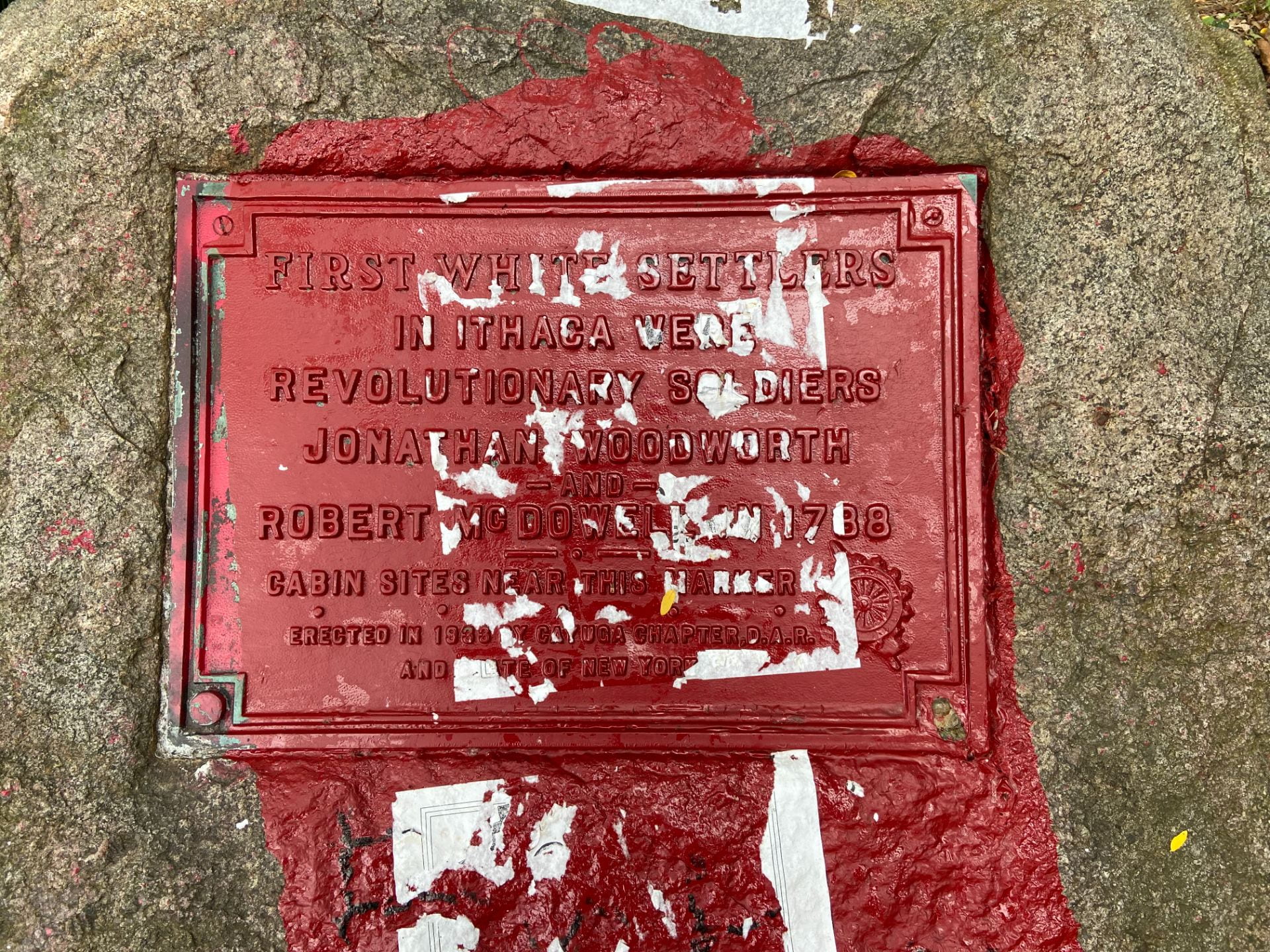by Professor Jon Parmenter

On October 7, 2020, Ithaca’s Common Council voted to remove from DeWitt Park an historical monument erected in 1933 by the (now-defunct) local chapter of the Daughters of the American Revolution. This marker commemorated the “First White Settlers” in Ithaca: two Revolutionary War veterans alleged to have erected cabins near what is now DeWitt Park. Beginning in 2017, the monument came under justified local criticism for its exclusion of both the Cayuga Nation, the Indigenous owners of the land, and long-time Black residents of Ithaca.
In its attempt to correct this historical injustice, however, the Common Council’s revised resolution actually made matters worse. Their resolution states: “Whereas the land here was once home to the Cayuga Indians, one of the Six Nations of the Haudenosaunee Confederacy, and one of the Cayuga’s refugee [guests], the Tutelos and Suponis [sic]. The Cayugas fought and then fled before General Sullivan’s invading American army in September of 1779. By 1789, the land was largely unoccupied and American settlers had begun to arrive, albeit before legal land claims could be made.”
Beyond a forgivable spelling error (the proper ethnonym is “Saponis”), the resolution constitutes a more explicit erasure of Cayuga ownership and occupancy than the comparative silence of the 1933 DAR marker. It is true that after making a stand at the Battle of Newtown (near present-day Elmira) on August 29, 1779, Cayugas and other Haudenosaunee opted to take flight beyond the reach of the invading American army. This was a strategic withdrawal that saved lives at the price of temporarily sacrificing their settlements and much of their property.

But according to the Common Council’s resolution, the Cayugas abandoned the area permanently as a result of the Sullivan-Clinton campaign. That is not true – Cayugas and other Haudenosaunee returned to their ancestral homelands in the Finger Lakes region shortly after the 1779 American invasion. Had Cayuga territory been “largely unoccupied” after the Revolutionary War, the sustained, often extralegal efforts of both the national government and New York State to dispossess the Cayugas of their land base during the last two decades of the eighteenth century would have been unnecessary.
By erroneously reducing the Cayugas to victims who abandoned their ancestral homelands, the Common Council’s resolution perpetuates a misleading impression of Indigenous erasure. Replacing an outdated monument to white settlement with an inaccurate resolution that posits a terminal narrative of the Cayuga Nation’s history does yet more violence to our ability to understand and learn from the past. As the lone Haudenosaunee nation to be completely dispossessed of their land base in New York State after the Revolutionary War, the Cayugas deserve a more thoughtful representation of their history in the City of Ithaca than that offered by the Common Council. Ideally, the Common Council would consider consulting with living members of the Cayuga Nation residing locally, who can best relate the true consequences of their dispossession for the rest of us.
